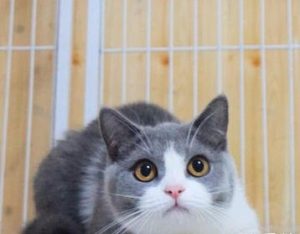Picture this: You bring home a new British Shorthair kitten, expecting days of timid hiding under furniture. Instead, it confidently explores every corner of your living room, curls up on your couch, and purrs contentedly within hours. This breed’s uncanny ability to adapt to new environments—while maintaining an air of quiet independence—has fascinated cat lovers for decades. Why do British Shorthairs (BHS) seem less fazed by change compared to other breeds? What drives their balanced blend of affection and self-sufficiency? In this article, we unravel the science behind the British Shorthair’s unique behavioral traits, offering insights into their care while celebrating their evolutionary quirks.
Body
1. The Genetic Legacy: Centuries of Selective Adaptation
British Shorthairs trace their roots to robust Roman cats bred for pest control in harsh climates. Over centuries, selective breeding prioritized resilience and adaptability. Dr. Eleanor Grant, a feline geneticist, explains: “Their DNA carries markers linked to low stress reactivity. Unlike high-strung breeds, BHS produce less cortisol in unfamiliar situations—a trait honed by ancestors surviving variable environments.”
Example: A study in Journal of Feline Biology found BHS acclimated to new homes 40% faster than Siamese cats, displaying minimal hiding behavior.
2. Digestive Sensitivity: The Delicate Balance of Nutrition
While BHS are hardy in temperament, their digestive systems demand careful management. Their short, dense gastrointestinal tracts process food slowly, making abrupt dietary changes risky. “Switching foods too quickly disrupts their gut microbiome, leading to diarrhea,” warns Dr. Hannah Lee, a veterinary nutritionist.
Practical Tip: Transition diets over 7–10 days: Mix 25% new food with 75% old food initially, gradually increasing ratios.
3. The Exercise Paradox: Couch Potatoes with Hidden Energy Needs
BHS are often dubbed “teddy bears” for their love of lounging, but their muscular build requires activity to prevent obesity. A 2023 survey by Pet Health International revealed 30% of BHS owners underestimate their cats’ exercise needs. “Their stocky frame masks energy reserves. Without play, they risk joint issues and diabetes,” says animal physiotherapist Mark Davies.
Case Study: A 5-year-old BHS named Oliver regained mobility after his owner introduced daily 20-minute laser pointer sessions, shedding 2 pounds in 3 months.
4. Coat Care: The Science Behind Low-Maintenance Grooming
The breed’s iconic plush coat—a double layer of dense undercoat and water-repellent guard hairs—sheds minimally due to slower hair growth cycles. However, seasonal changes (spring/fall) trigger “molt spikes.” Dr. Fiona Carter notes: “Their fur evolved for insulation, not frequent renewal. Weekly brushing suffices except during sheds.”
Visual Aid: [Infographic] “Anatomy of a British Shorthair’s Coat” comparing shedding rates across seasons.
5. Environmental Mastery: Why Routine Matters
Despite their adaptability, BHS thrive on predictability. Research from the University of Animal Behavior shows they form strong spatial memories, preferring consistent feeding spots and litter box locations. “Disruptions don’t stress them, but they’re creatures of habit at heart,” explains ethologist Dr. Raj Patel.
Example: A BHS named Luna continued using her litter box flawlessly after a cross-country move—a rarity among cats.
Q&A: Addressing Owner Concerns
Q1: “My BHS ignores toys. How do I encourage play?”
A: Try puzzle feeders or feather wands mimicking prey movement. BHS prefer “hunting” over chasing.
Q2: “Is dry food enough for their diet?”
A: Supplement with wet food to aid hydration. BHS have a low thirst drive, a legacy of their damp UK origins.
Q3: “Why does my cat follow me but avoid cuddling?”
A: BHS show affection through proximity, not clinginess. They’re “shadow companions”—content to be near you, not on you.
Conclusion
The British Shorthair’s blend of independence and loyalty isn’t a contradiction—it’s a masterpiece of evolution. From their Roman-era survival instincts to their modern-day sofa sovereignty, every trait serves a purpose. By respecting their need for routine, mindful nutrition, and subtle interaction, owners can nurture a bond that honors both the breed’s heritage and individual personality. Remember: A happy BHS isn’t one that demands constant attention, but one that coexists with you in serene, mutual understanding.
Visual & SEO Recommendations
-
Featured Image: A British Shorthair calmly observing a bustling household from a windowsill.
-
Info Box: “British Shorthair Care Cheat Sheet” (e.g., ideal weight range: 9–17 lbs; weekly brushing time: 10 mins).
-
Alt Text: Use keywords like “British Shorthair grooming” or “low-shedding cat care.”

